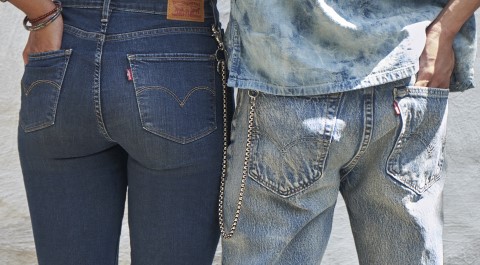When a ₹15,000 designer lehenga shows up on a budget e-store for ₹1,499, stitched to imperfection and stripped of credit, it’s not a fashion fluke; it’s a legal failure. In India’s thriving fashion scene, creativity is currency. But what protects that currency when the law barely acknowledges it? While runway knockoffs flood markets faster than the designer can say “next season,” India’s copyright framework stands awkwardly backstage, unsure whether fashion deserves the spotlight. Behind the glamour and gloss lies a legal system still tangled in outdated doctrines, leaving designers vulnerable to design theft, mass-market piracy, and corporate copycats. This article unbuttons the fragile seams of Indian copyright law and asks: can it ever catch up with couture?

The Law Says It’s a ‘Useful Article.’ Designers Call It Art.
In the eyes of Indian copyright law, a fashion garment isn’t art, it’s utility.
That’s right: no matter how sculptural the silhouette or hand-woven the motif, the moment a design becomes wearable and is mass-produced, it loses its copyright armour. This legal loophole stems from the Copyright Act of 1957, which excludes helpful articles from long-term protection if they are reproduced more than 50 times. Copyright protection ends here, handing over the reins often inelegantly to the Designs Act 2000.
But here’s the catch:
- Most designers don’t register their designs under the Designs Act because the process is time-consuming, technical, and unknown to many in the fashion world.
- Once commercialised without registration, the design becomes legally naked and can be copied without consequences.
This framework overlooks the modern reality of fashion as both a commercial enterprise and a cultural phenomenon. Unlike music or film, where copyright protection is automatic and robust, fashion in India sits in a legal grey zone, neither fully protected nor entirely free.

Racks of Knockoffs, Rows of Lawsuits: Real-World Copycat Conflicts
When designer wear ends up on street stalls or in the hands of rival brands without permission, legal battles follow, but the outcomes rarely favour the original creator. Indian courts have seen some notable fashion copycat clashes, but they expose how patchy and underwhelming the legal remedy can be.
- Ritika Apparels v. BIBA Apparels (2016)
Ritika, a Delhi-based designer label, accused BIBA, an Indian retail giant, of reproducing its original “peacock print kurti“ design without consent. While the design was undeniably copied, the court held that copyright protection no longer applied since it had been mass-produced. The designer’s failure to register under the Designs Act left the work vulnerable.
Moral of the story? In fashion, creativity without registration is a sitting duck. - Microfibres Inc. v. Girdhar & Co. (2009)
This case dealt with fabric designs, but the verdict set a broader precedent. Copyright protection ceases once a design is applied to an article and reproduced industrially (over 50 times), and any claim must be brought under the Designs Act.
The message from the court was clear: copyright is for canvases, not commercial closets. - Masaba Gupta, Sabyasachi & More: The Social Media Era of Shaming Copycats
Today, many Indian designers use Instagram to call out copycats. From Masaba Gupta’s signature prints to Sabyasachi’s bridal motifs, big and small, designers alike have taken to public naming and shaming, because legal redress often doesn’t deliver. The comments section has replaced the courtroom. But public outrage doesn’t always translate into enforceable rights.

Fashion is Fierce, But the Legal Backing is Frail
For an industry built on detail, drama, and differentiation, it’s ironic how little legal defence Indian designers have. The problem isn’t just the law, it’s everything around it.
- Legal Literacy? Still on the Hanger
Most fashion designers—especially emerging or regional ones aren’t trained in intellectual property law. They focus on fabric, not filing. By the time they realise someone’s copied their work, the damage is done and the design is devalued. - Designs Act = Confusing, Costly, and Cumbersome
Even if a designer wants protection under the Designs Act 2000, the process isn’t exactly runway-ready. - The application is technical.
- The fees pile up quickly.
- And enforcement? Out of reach unless you’re backed by couture capital.
- Litigation is a Luxury
Filing a civil suit for copyright or design infringement is a long, expensive affair. For small or independent designers, the idea of dragging a copycat to court feels like suing Zara with a safety pin. - Fashion Still Isn’t Taken Seriously
Let’s face it—India’s IP law still treats fashion as a stepchild of copyright and design regimes. Unlike Europe, where unregistered design rights exist, or the U.S., where design patents and trade dress offer real options, India’s framework is frozen in time.
India’s Law Is Still Tailoring. The Global? Already Wearing It.
While Indian designers struggle to fit into a legal system that does not cut for couture, fashion-forward economies have already reimagined how the law can protect creativity.
- The European Union: Fast, Fierce, and Fashion-First
The EU gets it. Under the Community Design Regulation, designers are automatically protected for up to three years from the date the design is made public, even without registration.
– Fast fashion doesn’t wait, and neither does the law.
– High-end houses like Dior or Alexander McQueen benefit from strong design rights without being buried in paperwork. - The United States: Stitching Copyright + Design Patents
In the U.S., certain sculptural elements of garments are copyrightable. For shape and structure, they have design patents.

India: Caught Between Acts
In contrast, Indian law divides protection between the Copyright Act and the Designs Act, yet lacks a seamless connection between the two.
After 50 commercial reproductions, copyright fades, and only a registered design can carry legal weight. But you’re legally exposed unless you registered it under the Designs Act.
It’s like being asked to walk a runway blindfolded and then penalised for tripping.
Conclusion: A Runway Without Rights is Just a Trap
In a country brimming with hand-embroidered heritage and cutting-edge couture, the absence of solid legal protection for fashion is not just ironic; it’s unjust. India celebrates fashion but doesn’t yet defend it. With outdated doctrines, confusing registrations, and sluggish enforcement, the law still dresses for yesterday while the industry designs for tomorrow.
Designers are not asking for favours, they’re demanding fairness. Creativity is currency, and every silhouette, stitch, and surface pattern deserves the dignity of protection. As fashion scales globally and technology accelerates the pace of copy-paste culture, India must create a legal framework that fits. Whether it’s introducing unregistered design rights, fast-track tribunals, or copyright reforms that recognise wearable art, it’s time the law stopped being off-the-rack.


















